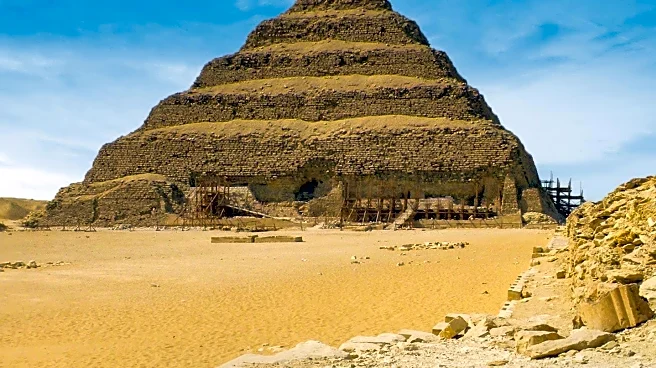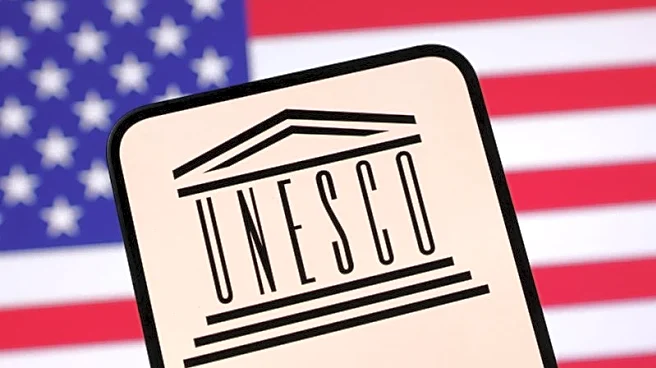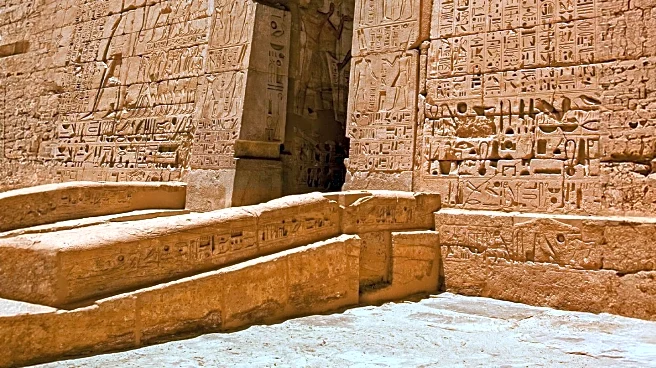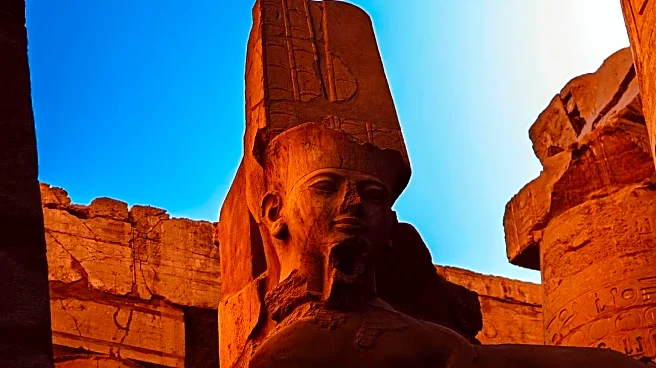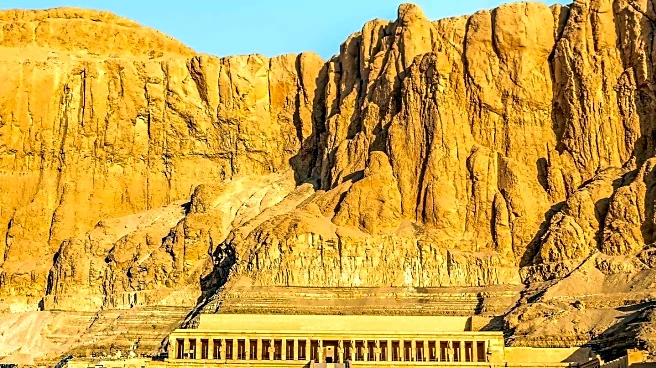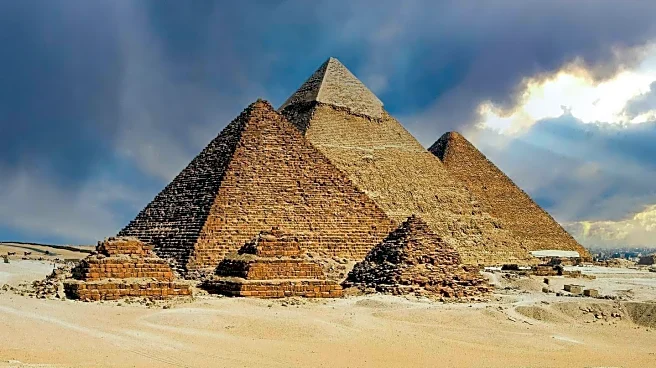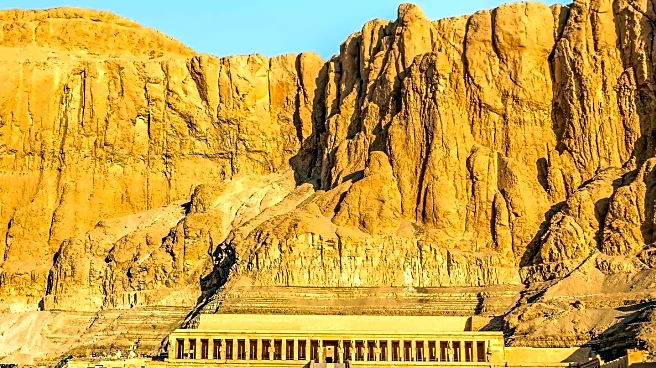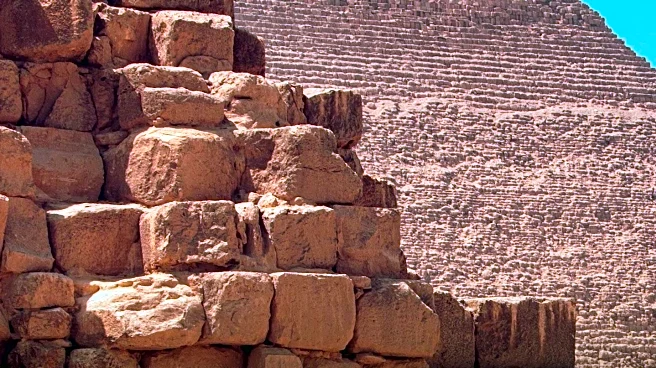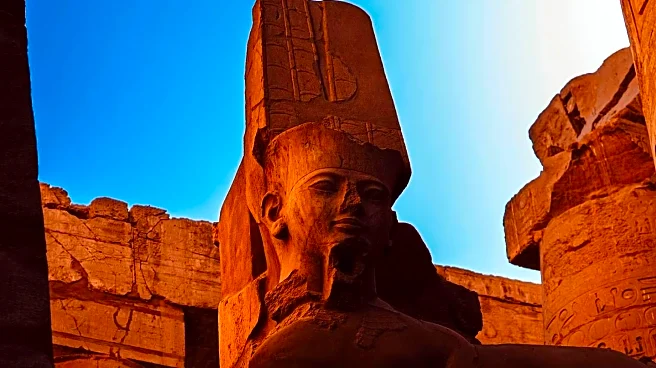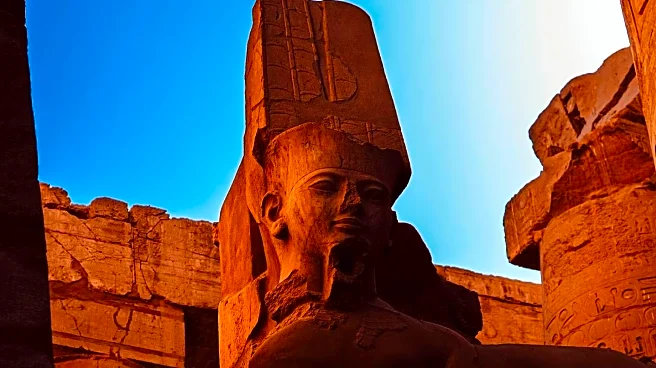What's Happening?
A limestone pharaonic painting has disappeared from the Saqqara necropolis in Egypt, as reported by Mohamed Ismail, the secretary-general of the Supreme Council of Antiquities. The painting was located in the tomb of Khentika, which dates back to the sixth dynasty of the ancient Old Kingdom, approximately 2700 B.C. to 2200 B.C. The tomb, discovered in the 1950s, had not been opened since 2019. Egyptian media noted that the painting depicted the ancient Egyptian calendar, which divided the year into three seasons corresponding to the Nile River's cycles. The disappearance was discovered by a British mission in May, and prosecutors are currently investigating the circumstances surrounding the loss. This incident follows the recent theft of a pharaoh's bracelet from the Egyptian Museum in Cairo.
Why It's Important?
The disappearance of the limestone painting from the Saqqara necropolis highlights ongoing challenges in preserving Egypt's rich archaeological heritage. Such incidents can have significant implications for the country's tourism industry, which relies heavily on its historical sites. The loss of artifacts not only diminishes the cultural and historical value of these sites but also raises concerns about the effectiveness of current security measures. The theft of the pharaoh's bracelet, which was melted down for its gold, further underscores the vulnerability of Egypt's antiquities to theft and illegal trade. These events may prompt Egyptian authorities to reassess and strengthen their preservation and security strategies to protect their invaluable cultural assets.
What's Next?
The investigation into the missing painting is ongoing, with prosecutors examining the circumstances of its disappearance. The outcome of this investigation could lead to changes in how Egypt secures and manages its archaeological sites. Additionally, there may be increased international collaboration to prevent the illegal trade of stolen artifacts. The Egyptian government might also consider implementing more advanced security technologies and protocols to safeguard its antiquities. The global archaeological community will likely be watching closely, as the resolution of this case could set precedents for artifact protection worldwide.
Beyond the Headlines
The disappearance of the painting from the Saqqara necropolis raises broader questions about the ethical responsibilities of countries and institutions in preserving cultural heritage. It also highlights the ongoing struggle against the illicit antiquities trade, which often involves complex international networks. The incident may prompt discussions about the role of international organizations, such as UNESCO, in supporting countries like Egypt in their efforts to protect and preserve their cultural heritage. Furthermore, it underscores the need for public awareness and education about the importance of safeguarding historical artifacts for future generations.

